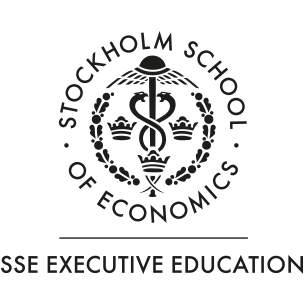Current research: Talent Management in Sweden
Talent Management (TM) is all about identifying, developing and retaining key employees. The past two decades have seen a dramatic increase in interest worldwide for Talent Management and its practical application. But are the current theoretical models and tools universal, or do they need to be adapted to national and cultural differences? Previous research has been based mainly on studies of multinational U.S. companies, so the question is justified.
Professor Andreas Werr and Associate Professor Pernilla Bolander, researchers at the Center for Human Resource Management and Knowledge Work at the Stockholm School of Economics have, together with graduate student Kajsa Asplund, studied 16 Swedish organizations in various industries in order to map out the application of TM in Swedish-based corporations.
How does Swedish company culture differ from that of the U.S. and how does it influence TM? In as much as differences exist, one can imagine that American ideals that celebrate individualism and elitism stand in stark contrast to the Swedish management style, which traditionally has defended socialist values and striven towards equality.
The study reveals TM to be an important and prioritized activity for all organizations. Most had good knowledge of TM based on the American elitist ideal, and for some it was precisely this ideal that they aspired to and worked towards. The majority, however, considered the elitist ideals to be less than desirable, and they were considered incompatible with the core values of the Swedish labor market. The authors of the report identify three different approaches to TM – a humanist, a competition-oriented and an entrepreneurial. Different attitudes greatly affect how TM-work is structured and practiced within the organization.
Humanistic approach
The humanistic approach to TM strives towards inclusion, with the assumption that everyone has a particular skill that is important to the organization and that TM should therefore cover the entire workforce. This brings with it a certain skepticism towards the concept of talent and sometimes even avoidance of the term. A characteristic of these organizations is that they are often smaller in size than companies applying other approaches, and often have limited or no international operations. The humanistic orientation was more common in companies where the majority of the workforce were relatively less educated – for example, in retail and tourism. These companies treat talent as something that can be refined, making training and skill development prioritized TM tools in the organization.
Competition-oriented approach
In the competition-oriented approach, talent is regarded as something exclusive that only a few are gifted with – a gift that sets them apart from their colleagues. Organizations with this approach are often characterized by global operations and operate in knowledge-intensive industries. A large percentage of the employees are highly skilled and performance-focused. Organizations in this category tend to regard talent as something innate – a stable internal property of the individual, independent of position and title. A consequence of this approach is that focus is directed at recruitment and talent identification. These organizations use significant energy on developing objective criteria and processes by which talents can be identified. Employees are quantified and/or categorized internally according to performance and potential, and assessments are validated in extensive calibration processes. Identified talented individuals are then offered specific development programs and are seen as candidates for key and career-building positions in the organization.
Entrepreneurial approach
Organizations with an entrepreneurial approach have characteristics similar to those with a competition-oriented approach. The biggest difference can be found in organizational structure and corporate cultures where organizations implementing an entrepreneurial approach are often decentralized and have a strong desire to promote entrepreneurial values. They see talent as an ability that the persons themselves can control. Ambition is therefore valued as highly as achievement and it is largely up to the individuals to seek their own routes to development. It is also through seeking out and successfully addressing challenges in the organization that the individual makes his or her talent visible. The organization’s role in TM is to create and make visible these opportunities. Motivation and the active seeking of challenges are valued higher than previous merits or specific skills.
The study creates a greater understanding of Talent Management and its application in Swedish organizations. It shows that different approaches suit different types of organizations, and, in concurrence with other research, points to the fact that there is no “best” TM approach. It is about applying the TM initiatives and activities that are mutually consistent and in line with the organization’s overall values. A more formalized approach, impartial recruitment procedures and categorizations can appeal to academically trained staff while the same strategy can alienate and may even be seen as provocative in a less academic or entrepreneurial environment.
The three approaches to TM as described above are based on diametrically different views on talent. But they have in common a certain degree of collectivistic values and the pursuit of equality. Not even in the most elitist associations were systems found that forced a predetermined differentiation of the employees (so-called forced ranking) or categorization of employees into A, B or C players, which is quite common in other cultures. The full research report Talent Management in a Collectivistic and Egalitarian Context – The Swedish Case, can be downloaded here.


